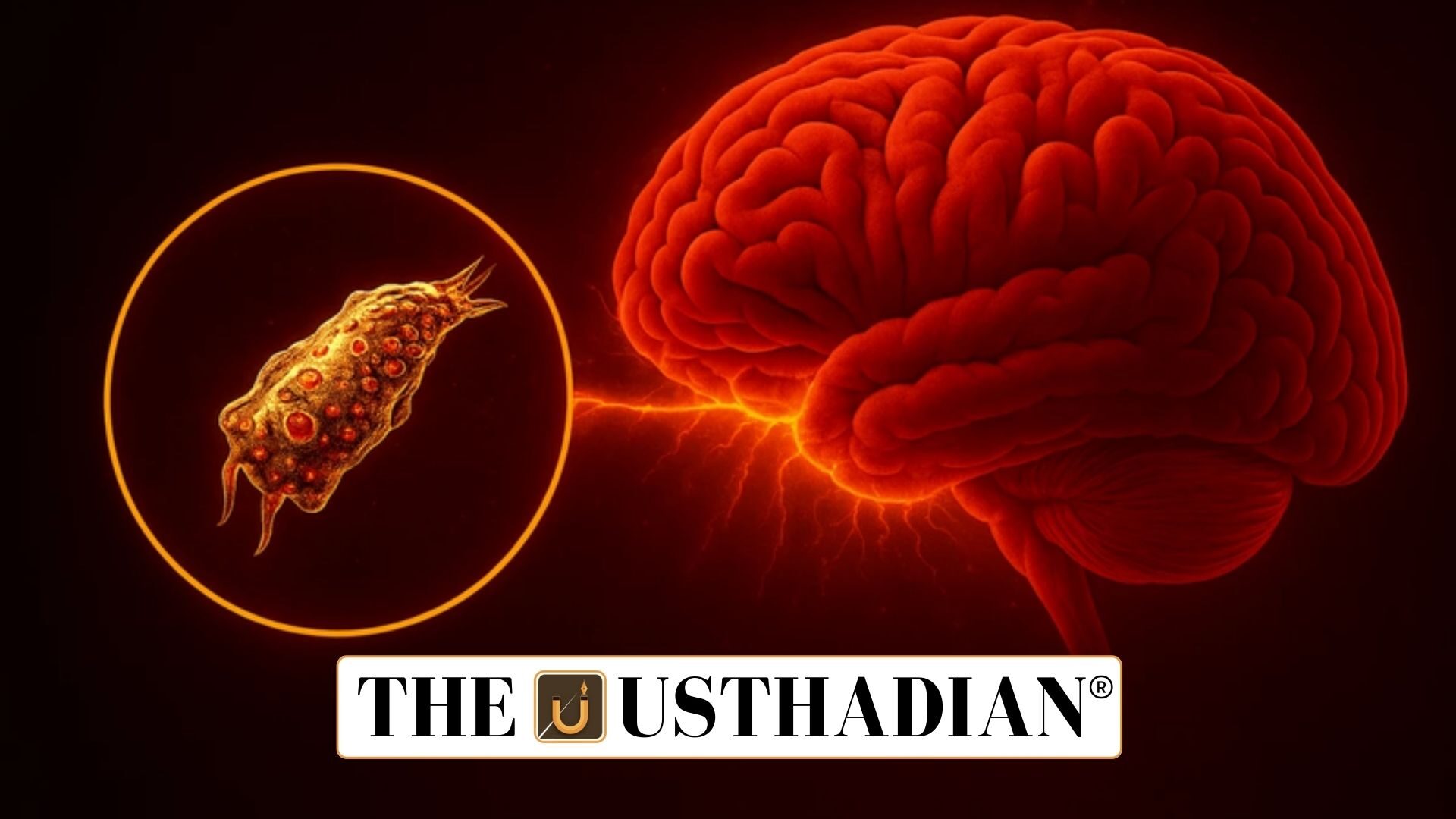What the Disease Is
Primary Amoebic Meningoencephalitis Cases in Kerala: Primary Amoebic Meningoencephalitis (PAM) is a severe brain infection triggered by the free-living amoeba Naegleria fowleri, popularly known as the brain-eating amoeba. It survives in warm lakes, ponds, and moist soil. Entry occurs through the nasal passage, after which the amoeba migrates to the brain. The illness develops suddenly, with initial signs like headache, fever, and nausea, quickly leading to neurological deterioration.
Static GK fact: The earliest confirmed case of Naegleria fowleri infection was recorded in South Australia in 1965.
How Infection Spreads
Most infections arise from swimming or bathing in warm freshwater, where contaminated water enters the nose. Drinking such water does not spread the disease. Recent cases, particularly in young children, suggest exposure can also happen through soil and airborne dust. A related organism, Acanthamoeba, is also capable of causing meningoencephalitis, though its incubation period is longer.
Static GK tip: Naegleria fowleri thrives in temperatures above 25°C and can survive up to 46°C, making warmer climates risk-prone.
Situation in Kerala
Kerala reported its first PAM infection in 2016. Since then, a steady increase has been noted. The year 2024 saw 36 reported cases and 9 fatalities. In 2025, eight infections and two deaths have been identified so far. While the global mortality rate is 97%, Kerala has managed to bring this down to 25% due to improved health strategies. A significant milestone was the survival of a 14-year-old boy in 2024, making him the first Indian to recover and one of only 11 survivors globally.
Why Cases Are Rising
Several factors have contributed to the uptick in reported cases. Enhanced testing for acute encephalitis syndrome (AES) has led to more accurate detection. Additionally, climate change and rising water temperatures have created more favourable environments for the amoeba to grow. Urban pollution and stagnant freshwater bodies also add to the problem.
Static GK fact: Kerala is known for its strong healthcare model, with one of the highest doctor-to-population ratios in India.
Advances in Medical Response
Diagnosis of PAM is complicated because it mimics meningitis of bacterial or viral origin. Molecular diagnostic tools are now being used in Kerala for precise identification. The state has also introduced a dedicated treatment protocol, combining antifungal drugs, antibiotics, and intensive supportive care. This initiative has placed Kerala ahead of other states in combating the disease.
Government Action and Precautions
Kerala’s Health Department has rolled out strict monitoring of freshwater bodies, issued precautionary advisories, and strengthened hospital preparedness. Public awareness drives stress avoiding immersion in stagnant water and the importance of protective measures. Medical staff across districts are being trained to recognize and treat PAM early, improving survival chances.
Static Usthadian Current Affairs Table
Primary Amoebic Meningoencephalitis Cases in Kerala:
| Topic | Detail |
| Disease | Primary Amoebic Meningoencephalitis (PAM) |
| Causative agent | Naegleria fowleri |
| First Kerala case | 2016 |
| Cases in 2024 | 36 cases, 9 deaths |
| Cases in 2025 (till Aug) | 8 cases, 2 deaths |
| Global death rate | Around 97% |
| Kerala death rate | About 25% |
| Indian survivor | 14-year-old boy from Kozhikode in 2024 |
| Comparable amoeba | Acanthamoeba |
| State initiative | Special diagnostic and treatment protocol |








